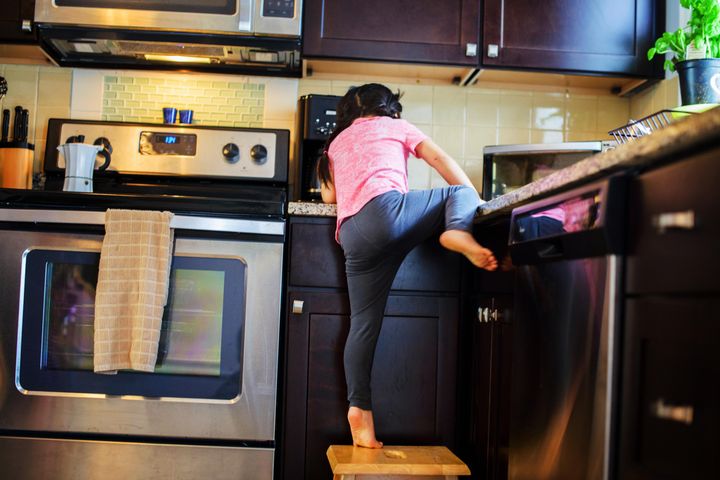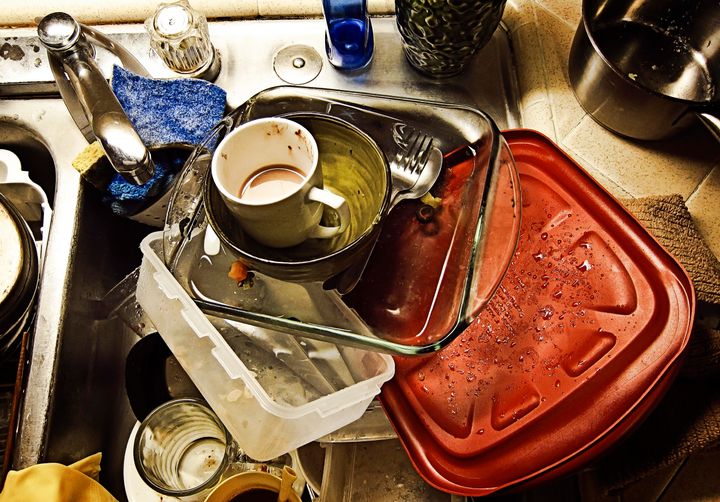News
How To Get Your Kids To Make Their Own Damn Snacks
Parents everywhere face a mother lode of work, especially now. I get it. At my corner desk nestled in the front room, I’m bombarded by hungry faces every 90 minutes. I’m torn between being a short-order cook, making snacks and lunches for my totally capable tweens, and yelling, “Go get your own damn snacks!”
The latter often results in someone scarfing down the closest junk food or leaving a mound of dishes on a sticky countertop after a creative kitchen adventure.
There has to be a better way. I consulted kids culinary instructors to find out where to begin, and they shared bite-sized steps you can take to lighten your load.
Increase the buy-in: Involve kids in the conversation about what they want to eat
“The more ownership kids can take in the kitchen, the more pride they feel in the finished product,” Andrea Wawrzyn, a test cook for America’s Test Kitchen Kids, told HuffPost. “Feeling independent adds to their excitement and interest in cooking.”
Teens especially like the concept of making food their own way. Wawrzyn recommends browsing kid-friendly recipes together and asking them what looks good or fun to make. Quesadillas, peanut butter toast and yogurt parfaits, for example, are easy snacks that can be made with a variety of add-ins and provide a protein kick that keeps kids full longer.
Parents often think children won’t try new foods, but Rebecca Hershberger-Howat teaches ”chefcitos” to cook healthy, culturally relevant meals in her classes at Olivewood Gardens and Learning Center in California.
“Kids are more complex than we give them credit for,” she said. “When you present cooking as an exploration where kids can make suggestions and learn, the kitchen becomes a safe space and kids will try new foods, even if it’s just one big bite.”
Keep it simple and convenient
Look for kids cookbooks with snack recipes that include steps like “ask an adult for help” and reminders to turn off the stove. The colorful pictures and step-by-step approach (many with shopping and substitution suggestions) pique interest and clue parents in on the time commitment and cooking level required.
“Adults take for granted our knowledge base when we approach the kitchen. Kids don’t have this built in. They have to learn it,” Wawrzyn said. “Easy, manageable recipes for kids have three things in common: They use pantry staples, you can make it your way and no special equipment is needed.”
Sandwiches, English muffin pizzas and nachos fit the bill for elementary-aged kids and beginners, and they’re also a hit with teens. Wawrzyn recommended the America’s Test Kitchen Kids site for recipes searchable by age.
Chef Angela Felice, founder of Amore Kitchen in San Diego, teaches cooking to both children and adults. Felice believes that “eating the rainbow can be fun if presented as a challenge.”
“Kids can prepare foods they already like but serve it differently,” she said. ”Make a fruit kabob instead of a bowl of fruit, or allow kids to find artistic ways to explore making animals or shapes with fruits and vegetables. Smoothies allow kids to experiment with different combinations of fruits and vegetables and can be served anytime.”
Plan ahead to save time
The weekend is your friend. Minimize time and hassle by having kids plan and prepare for the week ahead.
I recently took advice from Felice and had my kids create their own snack menu. I set a timer and challenged the kids to find healthy snack ingredients in the fridge and pantry, and use those items to create the menu. I wanted to use up pantry items before shopping, so their week’s snack menu possibilities included cheese and crackers, ants on a log and avocado toast.
“Include at least a couple grab-and-go items,” Felice said. A bowl of fruit or a basket filled with healthy bars in a prominent spot on the counter makes choosing healthy snacks easy.
After deciding on ants on a log, the kids lined up celery, peanut butter and raisins, made a double batch and cleaned up. I wasn’t sure how this would play out, but it paid off. Because I’d spent a few minutes training them to plan ahead, not only were they empowered to be self-sufficient later on in the week, but I also reinforced an important rule: Don’t wipe up peanut butter with the dish towel!
Elementary kids and older can help inventory pantry items with a checklist and pre-pack lunch items such as salad in a jar or sandwiches, which saves you time, Felice said.
Use the weekend when you’re less likely to be immersed in your work to challenge kids to add healthy ingredients to pancakes, muffins or no-bake energy bites. You can be on standby if necessary to assist, and they will get to make a delicious snack of their choice that will last through the week, Hershberger-Howat said.

Set up a safe kitchen environment
Not ready to let kids use the stovetop or oven yet? Try the toaster oven, blender or panini press, experts said.
“Rather than avoid them altogether, we encourage parents to teach kids to use appliances safely,” Wawrzyn said. “A good rule of thumb to remember is that burns are much more significant at 400 degrees versus 350, so kids using the oven alone should stick to lower temperatures.”
Concerned about knives? Hershberger-Howat recommended these tools:
-
Wavy knife: “This easy-to-hold tool can be used by pre-K to sixth graders. Be careful to test the edge of the blade for sharpness with young users.”
-
Hand-powered food processor: “This is good for all ages, but it requires a little strength for some foods. Great for dicing lots of onions or peppers. Energetic kids really like it.”
-
Cutting gloves: These protect hands from accidents, as the fit allows for dexterity. They come in a variety of sizes and are “an inexpensive investment for anxious parents.”
Use cooking show themes as inspiration
Let cooking shows provide inspiration. Felice recommended a competition show such as “Chopped” to encourage kids to use up pantry items and make lunch in a timely manner.
Themed meals stretch the imagination and encourage children to try something new. Hershberger-Howat suggested voting for a favorite fruit or vegetable and making it the star ingredient of the week. Foods taste different depending on how they’re prepared. Lots of kids like raw carrots, but maybe they’d also try them roasted or in carrot cake.
Teach kids how to ‘clean as you go’
As with cooking, the skills needed for cleanup aren’t built in ― we have to teach skills such as washing dishes step by step, Felice said.
Debra Sands, a middle school culinary teacher at La Mesa Arts Academy in California, echoed the sentiment.
“Teach your standards,” Sands said. “We can’t expect kids to rise to our level of cleanliness without detailed instruction and feedback.”
One way to do this is to create a simple evaluation system that might look something like this:
-
Excellent: Every dish scraped, washed, rinsed and dried with no food particles remaining.
-
Decent: More attention to detail needed.
-
Needs work: Go back and redo.
To encourage teamwork among multiple kids, Sands proposed assigning rotating roles to each child: The “chef de cuisine” makes the food with help from others. The “expediter” grabs ingredients and cleans the work area, and the “busser” clears the table and loads the dishwasher.
The important thing is to give kids the tools they need to get the job done safely and independently. It may require a few teaching sessions, but once they get the hang of it, they’ll be making their own snacks ― and cleaning up after themselves ― all on their own.
“When you give kids time in the kitchen, you’re building a life skill and setting down a foundation for success,” Wawrzyn said.
Read more

